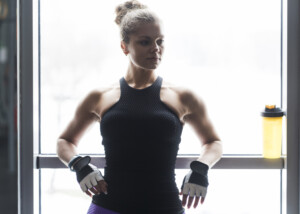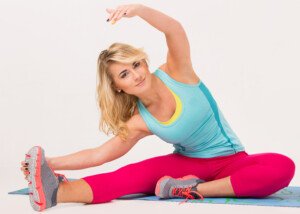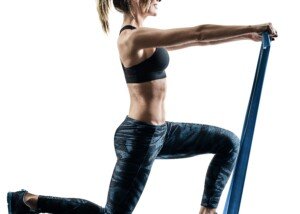Are you healed of your snapping hip syndrome or fear that a mild case might get worse, and you’re wondering what gym exercises could cause or worsen this condition?
Snapping hip syndrome is also known as popping hip and dancer’s hip.
- The sufferer hears and feels popping, cracking or snapping in the hip joint with certain movements.
- The condition usually causes pain.
Of course, one need not be a dancer to develop this condition, which boils down to inflammation of one of two tendons that attach to the hip.
“While both kinds [internal and external] lead to snapping-type sensations, you can tell which one you have based on the location of the snapping,” says Dr. Megan McLain, PT, DPT, cofounder of Intuitive Choice Physical Therapy & Wellness in Atlanta, GA.
“If on the outer hip, it’s called external snapping hip syndrome, and this is most commonly caused by excessive tightness in the iliotibial band or IT band.
“If the snapping occurs in the front of the hip, this is internal snapping hip syndrome and is usually caused by one of the hip flexor tendons, the iliopsoas gliding over tissue and bony prominences underneath it.”
Repetitive squatting motions and a lot of deep, wide-feet leg pressing can lead to the internal version, but the external type is more common, so this article will focus on IT band tendonitis.
Exercises that May Cause Iliotibial Band Tendonitis: External Snapping Hip
“This condition is most commonly caused by muscle imbalances or weakness/lack of endurance in the glutes or hip flexors,” says Dr. McLain.
The following exercises are in no particular order.
1 Jogging in Place; Running
“If you’re already dealing with popping in the outside of your hip, bringing your knees quickly toward your chest, like is required for jogging or running, is likely going to exacerbate this condition,” says Dr. McLain.
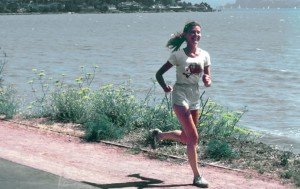
“This will cause tightening in the hip flexors and IT band and lead to the tendons sliding over the bony prominence on the outside of the hip, called the greater trochanter.
“In order to ensure that you’re fit for running, you should at minimum be able to perform a single-leg squat and jump without the knee caving in toward the center of the body.
“If this occurs, it’s an indication that the glutes are not strong enough to absorb the force, and you will overcompensate with other muscles, which will likely eventually lead to pain.”
2 The Stairmaster
“Using a stairmaster, because it involves repetitively climbing stairs, can put excess strain on the IT band once the glutes fatigue, since this is an endurance exercise,” says Dr. McLain.
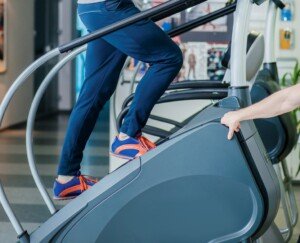
Shutterstock/Maksym Poriechkin
“When the IT band gets strained, it can cause the hip to have a snapping sensation in the front or the side due to overuse.
“This can lead to extra inflammation and eventually cause conditions like IT band syndrome or hip bursitis as well.
“Start off using the stairmaster for shorter intervals, taking breaks in between to recover.
“Pay attention to how your body is responding. If you’re not feeling your glutes working during the exercise and are only feeling it in the side of your leg or toward your knees, then you’re not using all of your muscles effectively to perform the exercise.”
NOTE: Don’t lean into the machine and stick your butt out.
Step as naturally as possible, as you would on an actual staircase.
This means erect posture. If you hold onto the machine, this will encourage increasing dependence on supporting yourself with a tight grip and even leaning your forearms on the equipment.
Before you know it you’ll be hunched way over. Instead, step without holding on – even if this means starting out at the slowest setting.
3 Deep Squats
Dr. McLain explains, “Due to the fact that the hip has to rotate quite a bit in the socket, and the muscles and ligaments have to have good range to allow for a full squat, this movement can be irritating and worsen snapping hip syndrome, especially if you do not have the strength to control the movement through the full range.
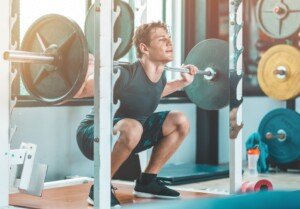
Shutterstock/Adamov_d
“If you feel that you’re losing control at any point in the squat or leaning forward excessively, then you’re pushing yourself beyond your current capabilities.
“Don’t be afraid to shorten the depth to which you’re squatting and train in a range you can control to avoid increased pain.”
Ask someone to watch your knees as you rise up from the squat. They shouldn’t be caving inward.
4 Deep Lunges
“Similar to squats, it’s easy to compensate during a lunge and strain the IT band with improper form, leading to increased snapping hip.
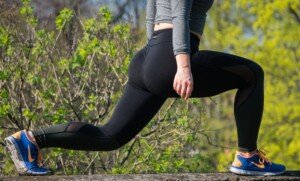
“Watch your form and ensure that your knees are tracking in line with your big toe while lunging.
“If the knees are caving in, it’s causing excess strain and work to the muscles on the outside of the hip, which can lead to more pain.
“Decrease the length of your stride, decrease your depth to a level you can control, and widen your stance a bit for a more hip-friendly version of the lunge.”
And keep your back straight and slightly arched rather than rounded; don’t lean forward.
5 Excessive Foam Rolling the IT Band/Hip Muscles
“Foam rolling to try to lengthen the IT band is a futile exercise.
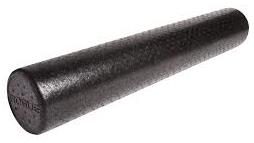
“The IT band is so thick that there is no way you will stretch it with a foam roller.
“In order to actually get at the root cause of snapping hip syndrome caused by the IT band, you need to release the muscle that connects to the IT band.
“This is called the TFL [tensor fascia latae] and it lives on the front outside part of your hip, right about where the base of your hands would fall if you tucked them into your front pocket.
“Foam roll this area and then follow it with hip abduction exercises like clamshells or side planks, depending on your fitness level.”

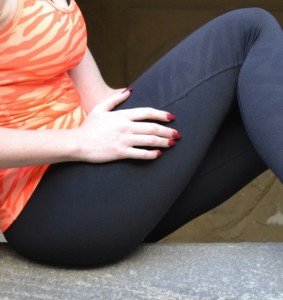
 Dr. Megan McLain, PT, DPT,
Dr. Megan McLain, PT, DPT,